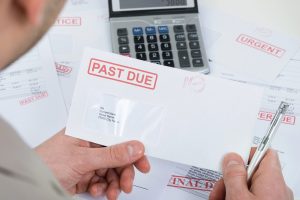The basic principle of company insolvency is much the same as personal insolvency. In short, it means a company is unable to make even the minimum payment on all of its various obligations. As with personal insolvency, there are different ways a business can go insolvent. All of them, however, create implications for company directors. Here is a quick guide to what you need to know.
Company insolvency data in England and Wales
Company insolvencies in England and Wales surged by 40% in May, reaching the highest level since monthly records began in 2019, according to government data from the Insolvency Service.
A total of 2,552 companies entered insolvency during the month, with the majority being creditors\’ voluntary liquidations (CVLs) where company directors agree to wind up the firm without involving the court. CVLs increased by 38% compared to the same month last year.
Compulsory liquidations rose by 34%, attributed to increased requests from HMRC to wind up companies for cash recovery. Administrations also saw a significant increase of 80% compared to May 2022.
The economic turmoil of the past three years, combined with rising costs, creditor pressure and high inflation, are cited as contributing factors to the rise in insolvencies. Experts predict that challenges related to interest rates and inflation will continue to impact businesses seeking funding in the coming months.
Implications for directors
Directors play a crucial role in managing a company\’s affairs, particularly during times of financial difficulty. It is therefore essential for directors to understand their duties and responsibilities in insolvency scenarios. While directors have a duty to act in the best interests of the company they serve, this duty shifts to acting in the best interests of the company\’s creditors when insolvency becomes inevitable. Failure to comply with this duty can expose directors to potential claims from administrators, liquidators and creditors.
Liability exposures for directors
Limited companies are legal persons in their own right. This means that they can exercise the same rights and assume the same responsibilities as natural persons. In particular, they can hold assets and be liable for debts.
It is therefore assumed that any debts taken out by a limited company belong to that limited company. Directors are not usually required to settle a company’s debts out of their personal assets any more than one family member is expected to settle another’s debts.
In the area of company insolvency, however, there is a twist to this. Directors can be required to settle company debts if it can be established that they acted inappropriately. Examples of inappropriate behaviour include the following.
Wrongful trading: Where directors continue trading despite knowing the company is insolvent
Misfeasance: The misapplication of company funds
Fraudulent trading: Where a company deceives and defrauds creditors.
Administrators, liquidators or creditors can make these claims independently or with the backing of insolvency litigation funders. By doing so, they can put pressure on directors to agree to a settlement rather than face the risk of going to court.
Importance of demonstrating diligence and minimising liability risk
Company directors have two solid defences against these tactics. Ideally, they should use both. The first is extensive and accurate record-keeping. In particular, records should not just show what was done but why it was done. In other words, they should demonstrate that directors acted in good faith and applied sound judgement to the best of their knowledge and abilities.
The second is to bring in an insolvency practitioner as soon as it becomes clear that the company is at risk of insolvency. Remember, bringing in an insolvency practitioner does not mean that directors will automatically be advised to make a company insolvent. It means that, if insolvency is the right course of action, it will be done in the right way. This will minimise, if not eliminate, the risk to company directors.





